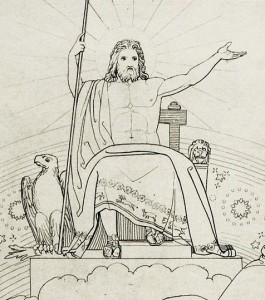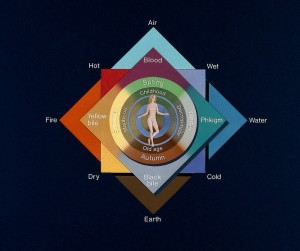What was the Buddha’s breakthrough? He gained enlightenment, right? Well, actually I’ve no idea. Just as I stay agnostic about the existence of God or its denial, likewise with the Buddha’s enlightenment. But recently I’ve been looking again in some detail at the sources on the Buddha’s life in the Pali Canon, and been thus reaffirmed in my view that the Buddha’s breakthrough was not enlightenment (or awakening, or however else you want to translate it) at all. His breakthrough consisted in the recognition of a method.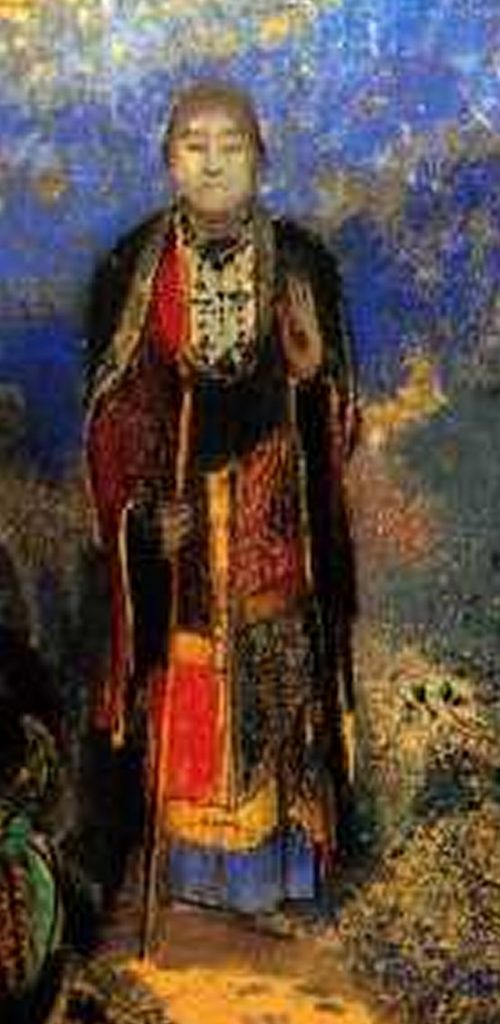
Let’s consider almost any other case of a historical figure who discovered a new method and then successfully applied it. Do we consider their method to be their most significant achievement, or what they did with it? Let’s take Picasso: was it more significant that he developed cubism, or that he painted Guernica or Les Demoiselles d’Avignon? Or Gandhi: was it more significant that he developed techniques of non-violent direct action that inspired many others, or that he made such a big contribution to the struggle for Indian independence? The further away we are in time and place, the more we are likely to see the significance of the method as far more important than the achievement. Why should the Buddha be treated any differently from that?
However, I’d say the case is actually much stronger with the Buddha than it is with either Picasso or Gandhi, because the Buddha’s method is of such universal importance. The Middle Way, understood as a principle of non-absolute judgement, can be applied by anyone anywhere to make progress from whatever point they’ve reached. By identifying and avoiding absolutisations, whether negative or positive, we can avoid delusions and thus make tangible progress, right now, being aware that absolutisations are our own projections. But enlightenment? It’s clear from human experience that we can make progress with greed, hatred and delusion, but profoundly unclear whether we could ever hope to eliminate them altogether. The description of the state of enlightenment as given in the Pali Canon also depends on metaphysical beliefs in karma and rebirth, because the Buddha is depicted as becoming enlightened by breaking them. Most importantly, no other human state is completely discontinuous. We can make breakthroughs, but they are never completely discontinuous, nor final, and never result in perfect knowledge of any kind. Belief in the Buddha’s enlightenment as an absolute is in conflict with confidence in the Middle Way.
Looking at the Pali Canon account of the discovery of the Middle Way, though, makes it clear how powerfully symbolic that discovery can be, because it involves such a dramatic puncturing of delusion. The Buddha has gone forth from the Palace where he began, and gone forth again from the cults of two different spiritual teachers, Alara Kalama and Udaka Ramaputta. In each case, the social context involved people insisting that they had the whole story, and the Buddha recognised that they did not. Then he began to practise asceticism, and he describes trying to stop himself breathing and then nearly starving himself. He’s obviously in a closed, rather obsessive loop whereby absolute beliefs are violently in conflict with his body. So what makes the difference? How does he get out of that state and discover the Middle Way instead?
“I considered: ‘I recall that when my father the Sakyan was occupied, while I was sitting in the cool shade of a rose-apple tree, quite secluded from sensual pleasures, secluded from unwholesome states, I entered upon and abided in the first jhana, which is accompanied by applied and sustained thought, with rapture and pleasure born of seclusion.’” (MN 36:20)
He gets back in touch with a memory from his earlier life in the Palace, showing that the Palace was not all bad. This memory is an experience of jhana – of an absorbed meditative state that, crucially, could only have been developed through deep acceptance and relaxation of his body. He has moved decisively from grasping after absolute, disembodied ideals that only produce conflict, to an embodied point of view. From that will follow that he must develop in ways that are possible and realistic for people with bodies, rather than sharing the delusions of those who forget that they have bodies. Not only is his need for nourishment, and the body-awareness that forms the basis of meditative practice, part of that recognition of this embodiment, but also the Middle Way itself, with its sceptical and agnostic awareness that we cannot have perfect knowledge, but instead need to work incrementally and provisionally to integrate the energies, meanings and beliefs of our interrelated mind-body.
When he gives his first address to others following his enlightenment, the Middle Way is the first teaching he then gives:
Bhikkhus, these two extremes should not be followed by one who has gone forth into homelessness. What two? The pursuit of sensual happiness in sensual pleasures, which is low, vulgar, the way of worldlings, ignoble, unbeneficial; and the pursuit of self-mortification, which is painful, ignoble, unbeneficial. Without veering towards either of these extremes, the Tathagata [Buddha] has awakened to the middle way, which gives rise to vision, which gives rise to knowledge, which leads to peace, to direct knowledge, to enlightenment, to Nibbana. (SN 56.11.421)
The version of the Middle Way that he gives here is one applicable to his audience: that is, the five ascetics, his previous comrades, who need to recognise that asceticism is not a helpful path. But it is already clear from the Buddha’s story that the path he has discovered is one that involves the capacity to question any claimed absolute, whether that consists of a belief about oneself, about ideology, about salvation, or any other matter. To show how much the Buddha uses this wider Middle Way, in his conduct, in much of his teaching, and particularly some of his similes, is a longer discussion, but it will form part of the book I am currently writing about the Buddha’s Middle Way.
It will no doubt be pointed out that whenever the Buddha refers to the Middle Way, he also describes it as the way to Nibbana (enlightenment), as he does in the quotation above. There is a positive way we can interpret this without accepting absolute beliefs about Nibbana, which is to see Nibbana as meaning the notional end-point of the Middle Way, pand thus effectively standing, archetypally and symbolically, for the Middle Way itself and the more integrated states that it can help us to develop. Just as God can be interpreted as a glimpse of our potential integration, so can enlightenment – as long as we separate these archetypal relationships clearly from beliefs about the existence of these entities, or indeed of any absolute (revelatory) information that is supposed to come from them. So, we can easily continue to be inspired by the figure of the Buddha, even if in some ways the term engrains an unhelpful emphasis on absolutes into the Buddhist tradition. The Buddha represents the potential integration of our psyches.
Though the Buddha ‘discovered’ the Middle Way in the sense of being the first person, as far as we know, to talk explicitly about it, he did not of course create it, any more that Newton’s ability to label ‘gravity’ and explain how it works magicked gravity into being. The ways in which it can be (and has been) discovered by others with varying degrees of explicitness needs just as much emphasis as the Buddha’s discovery. Nevertheless, that discovery itself, it seems to me, deserves a lot more celebration. The first thing the Buddha ate after discovering the Middle Way was rice porridge: why not eat that ceremonially in remembrance of the Middle Way (a sort of Buddhist eucharist)? His vital recollection of his experience under a rose-apple tree makes that tree perhaps just as important in our associations as the better-known bodhi tree. Here is an example. Eat a rose apple and think of the Middle Way.
Nevertheless, that discovery itself, it seems to me, deserves a lot more celebration. The first thing the Buddha ate after discovering the Middle Way was rice porridge: why not eat that ceremonially in remembrance of the Middle Way (a sort of Buddhist eucharist)? His vital recollection of his experience under a rose-apple tree makes that tree perhaps just as important in our associations as the better-known bodhi tree. Here is an example. Eat a rose apple and think of the Middle Way.
Pictures: (1) Buddha by Odilon Redon, (2) Rose Apple tree (Syzygium jambos) photographed by Forest and Kim Starr, CCSA 3.0

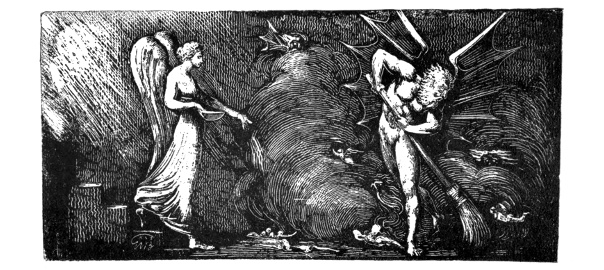
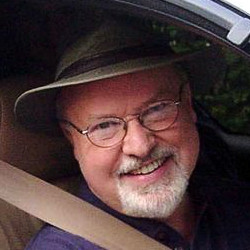
 It’s been 40 years since I was born, and I reckon I do not fall within Rohr’s grouping of people “formed in the last 30 years”. Not due to the mathematical exactness of his figures (in context he did not literally mean a cut-off at 30 years old!), but due to the fact that I was brought up in a very rigid – and ordered – container. My family was of the more evangelical protestant Christian variety and our acts of worship were not confined to Sundays (although there was a service every Sunday, sometimes two), but spread to other activities throughout the week and a general feeling of being watched at all times by an omniscient God who was, by turns, strict and loving. This religious context defined the pattern of my weeks and years, much more so than any other aspect of my life such as school or neighbourhood friendships. To put it into Rohr’s terms, I was, quite definitely, born into a box of order.
It’s been 40 years since I was born, and I reckon I do not fall within Rohr’s grouping of people “formed in the last 30 years”. Not due to the mathematical exactness of his figures (in context he did not literally mean a cut-off at 30 years old!), but due to the fact that I was brought up in a very rigid – and ordered – container. My family was of the more evangelical protestant Christian variety and our acts of worship were not confined to Sundays (although there was a service every Sunday, sometimes two), but spread to other activities throughout the week and a general feeling of being watched at all times by an omniscient God who was, by turns, strict and loving. This religious context defined the pattern of my weeks and years, much more so than any other aspect of my life such as school or neighbourhood friendships. To put it into Rohr’s terms, I was, quite definitely, born into a box of order. For example, I was indebted to the Jesus Christ whom – I was told – had died for my sins, but didn’t believe that anyone was listening when I prayed. I respected by parents, who became ministers in our denomination when I was 16, but had to find a way of hiding the fact that I was trying out drinking, smoking and other recreational drugs with my peers. I had been instilled with the ideal that sex was expressly for marriage and marriage was for life, but everyone else seemed to be doing it and when I eventually started doing it too it didn’t seem at all immoral or wrong – nothing had ever seemed so natural, normal and right. In other areas, in my school education for example, I was realising that there were well-justified reasons for believing that the universe was not centred around the human race, and this contradicted the interpretation of holy book that I’d been brought up to revere.
For example, I was indebted to the Jesus Christ whom – I was told – had died for my sins, but didn’t believe that anyone was listening when I prayed. I respected by parents, who became ministers in our denomination when I was 16, but had to find a way of hiding the fact that I was trying out drinking, smoking and other recreational drugs with my peers. I had been instilled with the ideal that sex was expressly for marriage and marriage was for life, but everyone else seemed to be doing it and when I eventually started doing it too it didn’t seem at all immoral or wrong – nothing had ever seemed so natural, normal and right. In other areas, in my school education for example, I was realising that there were well-justified reasons for believing that the universe was not centred around the human race, and this contradicted the interpretation of holy book that I’d been brought up to revere. The thing about this transition is that I didn’t then enter the metaphorical reorder box, I just cobbled together a different order box: I was an atheist, a materialist, a natural realist, a scientist, a rationalist (and so on – follow
The thing about this transition is that I didn’t then enter the metaphorical reorder box, I just cobbled together a different order box: I was an atheist, a materialist, a natural realist, a scientist, a rationalist (and so on – follow 